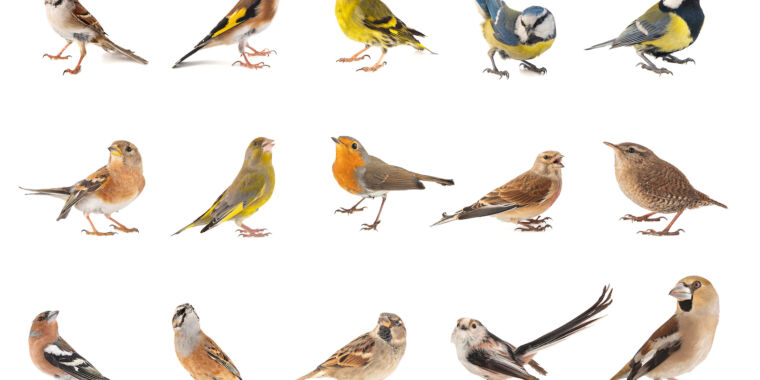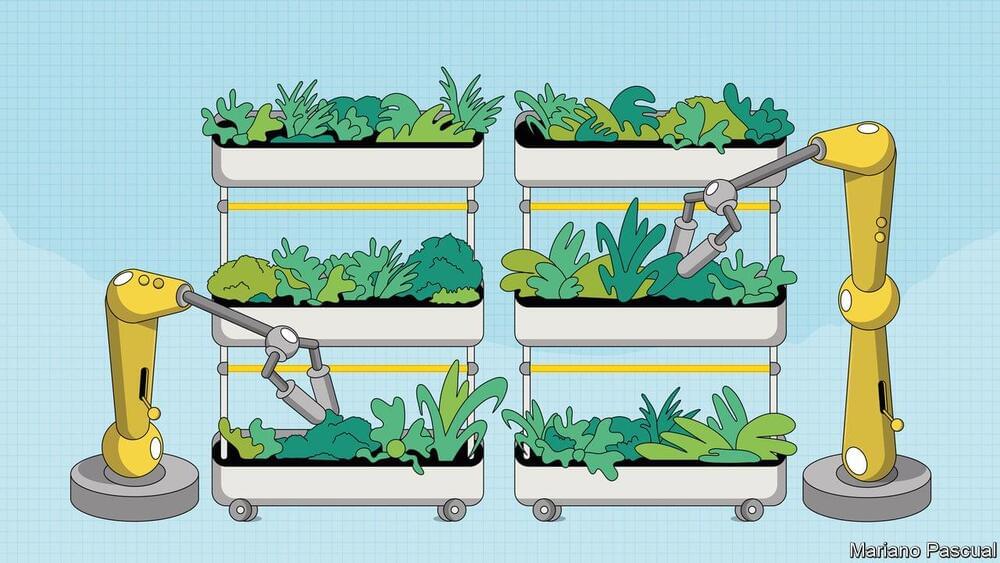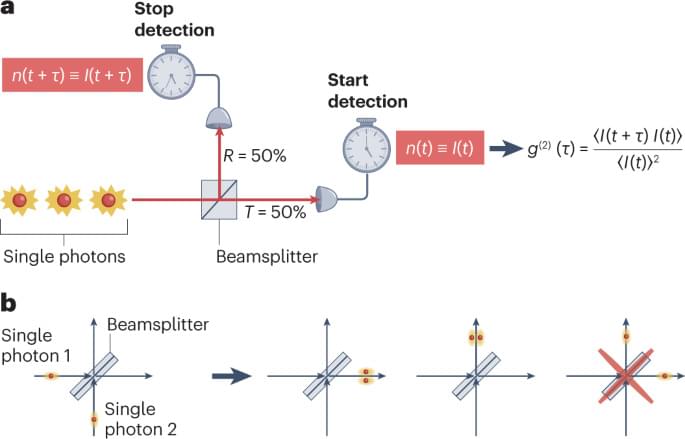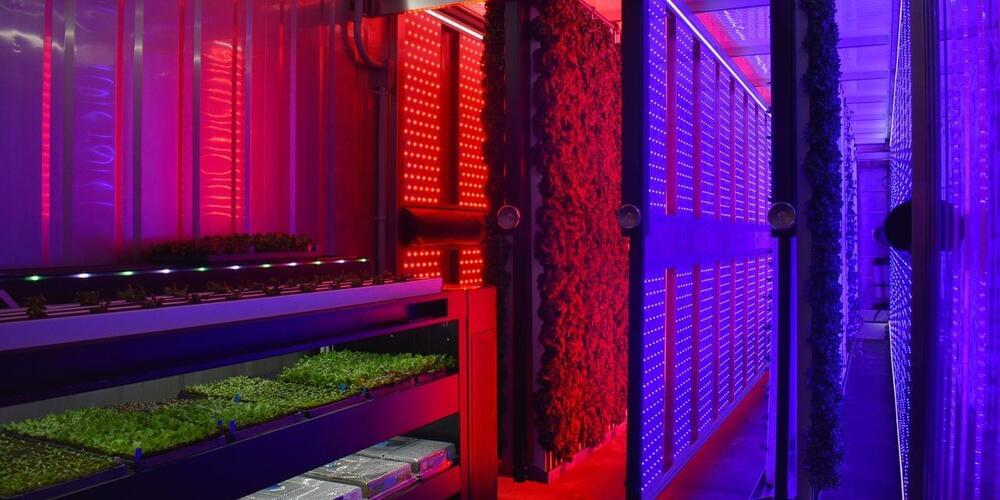Page 2565
Jun 5, 2023
Fluoridated water: Essential ingredient in U.S. water systems for cavity prevention and dental health equity
Posted by Shubham Ghosh Roy in categories: biotech/medical, health
Fluoridated water at recommended levels reduces dental cavities by 25%, emphasizing the importance of maintaining fluoride levels for effective caries prevention. Most water systems comply with safety standards, providing the full benefits of fluoridation.
Jun 5, 2023
Applications of single photons to quantum communication and computing
Posted by Dan Breeden in categories: computing, quantum physics
This Review overviews the application of single photons in quantum communication and quantum computation discussing specific needs and requirements and achieved milestones and outlining future improvements.
Jun 5, 2023
EMP Balloon Attack Threat From Chinese Military
Posted by Greg Allison in categories: food, military, space

See the shocking reasons why near-space balloons are a perfect platform for a cheap effective hard to detect, hard to defeat asymmetric warfare means to deliver a stunning devastating EMP attack on the US mainland.
Inspire your kids to love science!
SAVE 20% OFF New Science Kits Using Code: NEWKITSSAVE20 At Steve Spangler Science dot com! Great Educational Products For Kids! SHOP NOW! https://www.pntra.com/t/SENKTExNSUhDR05OSUxJQ0dPRkxGRw.
Continue reading “EMP Balloon Attack Threat From Chinese Military” »
Jun 4, 2023
PD-1 and PD-L1 Checkpoint Signaling Inhibition for Cancer Immunotherapy: Mechanism, Combinations, and Clinical Outcome
Posted by Quinn Sena in categories: biotech/medical, evolution
Year 2017 PD-1 can eventually be used throughout the body to be used on all cancers which also naturally occurs in the body the common cancer drug Keytruda uses this type of targeting to destroy cancer cells.
Several cancers are highly refractory to conventional chemotherapy. The survival of tumors in several cases is assisted by checkpoint immunomodulation to maintain the imbalance between immune surveillance and cancer cell proliferation. Check point antibody inhibitors, such as anti-PD-1/PD-L1, are a novel class of inhibitors that function as a tumor suppressing factor via modulation of immune cell-tumor cell interaction. These checkpoint blockers are rapidly becoming a highly promising cancer therapeutic approach that yields remarkable antitumor responses with limited side effects. In recent times, more than four check point antibody inhibitors have been commercialized for targeting PD-1, PDL-1, and CTLA-4. Despite the huge success and efficacy of the anti-PD therapy response, it is limited to specific types of cancers, which attributes to the insufficient and heterogeneous expression of PD-1 in the tumor microenvironment. Herein, we review the current landscape of the PD-1/PD-L1 mechanistic role in tumor immune evasion and therapeutic outcome for cancer treatment. We also review the current progress in clinical trials, combination of drug therapy with immunotherapy, safety, and future of check point inhibitors for multiple types of cancer.
Immunotherapy is an exciting approach, and tremendous strides have recently been made in our perception of the role of the host immune response in affecting tumor growth and response to various therapies (Pardoll, 2012). Through these advances, novel immune check point inhibitors have been identified and cleared for use in the clinic (Figure 1). The evolution of immune checkpoint inhibitors as anticancer treatment options represents one of the most successful approach in cancer drug discovery in the past few years (Couzin-Frankel, 2013). Indeed, immune checkpoint inhibitors have emerged as a frontline treatment for multiple cancers, such as metastatic melanoma, non-small cell lung cancer (NSCLC), renal cell carcinoma (RCCs), and bladder or urothelial cancer. They are presently being assessed in numerous other cancer types, including breast cancer, head and neck cancer, and some advanced solid and hematological malignancies.
Jun 4, 2023
Five New Farming Technologies Tackle Climate-Change Threats
Posted by Genevieve Klien in categories: biotech/medical, food
Innovative ideas and devices are on the rise as heavier rainfall, harsher winters and disease-causing pests pose risks for agriculture.
Jun 4, 2023
New drug effective at preventing growth of lower-grade brain tumors, clinical trial finds
Posted by Genevieve Klien in categories: biotech/medical, neuroscience
A new drug that is in a phase 3 clinical trial has proven effective at preventing the growth of lower-grade brain tumors, with doctors saying nearly half of the patients in the trial haven’t needed chemotherapy or radiation years later. NBC News’ Lindsey Reiser has the details on the treatment.
Jun 4, 2023
Identifying the cause of mysterious heart disease in women
Posted by Genevieve Klien in category: biotech/medical
Prof. Kovacic said, “SCAD is still a relatively little-known disease, but it has a huge impact and is behind a quarter of all heart attacks in women under 50. We urgently need to learn more about this disease and discover what is causing it.”
He added, “This disease can not only be life-threatening, but it can reoccur without warning in some patients.”
The researchers are the first outside of the United States to join the iSCAD Registry, a global collaboration of researchers and patients studying the characteristics and pathogenesis of SCAD.
Jun 4, 2023
A shocking number of birds are in trouble
Posted by Michael Taylor in categories: food, sustainability
 Just about anywhere you look, there are birds. Penguins live in Antarctica, ptarmigan in the Arctic Circle. Rüppell’s vultures soar higher than Mt. Everest. Emperor penguins dive deeper than 1,800 feet. There are birds on mountains, birds in cities, birds in deserts, birds in oceans, birds on farm fields, and birds in parking lots.
Just about anywhere you look, there are birds. Penguins live in Antarctica, ptarmigan in the Arctic Circle. Rüppell’s vultures soar higher than Mt. Everest. Emperor penguins dive deeper than 1,800 feet. There are birds on mountains, birds in cities, birds in deserts, birds in oceans, birds on farm fields, and birds in parking lots.
Given their ubiquity—and the enjoyment many people get from seeing and cataloging them—birds offer something that sets them apart from other creatures: an abundance of data. Birds are active year-round, they come in many shapes and colors, and they are relatively simple to identify and appealing to observe. Every year around the world, amateur birdwatchers record millions of sightings in databases that are available for analysis.
All that monitoring has revealed some sobering trends. Over the last 50 years, North America has lost a third of its birds, studies suggest, and most bird species are in decline. Because birds are indicators of environmental integrity and of how other, less scrutinized species are doing, data like these should be a call to action, says Peter Marra, a conservation biologist and dean of Georgetown University’s Earth Commons Institute. “If our birds are disappearing, then we’re cutting the legs off beneath us,” he says. “We’re destroying the environment that we depend on.”
















